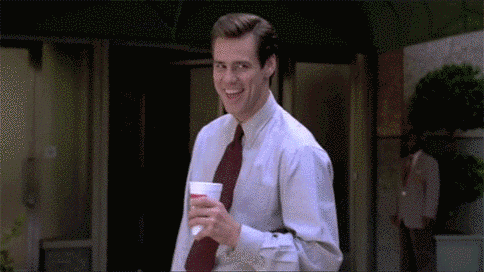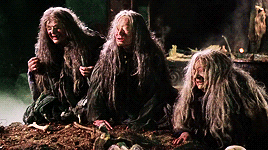#ok technically it is the aegean sea
Explore tagged Tumblr posts
Text
i’m at a beach resort on the mediterranean with a friend in turkey after our weeks of work travel and the weather is perfect, the water is crystal clear, the food is good, and i think i’m healed.
#we got here yesterday afternoon and had lunch + swam in the water + had dinner + went to sleep early#we woke up around 6:30AM and have just been hanging out on our private balcony#we got a room upgrade bc she hit platinum at marriott during our work trip#(they DID think we were a couple bc we were too poor to book 2 rooms and the only options left were king beds lol)#(they fully covered the bed in flower petals and towel hearts)#(it was genuinely hilarious lol)#kat liveblogs her life#kat travels#ok technically it is the aegean sea
9 notes
·
View notes
Text
Glass Onion really was just me yelling about how stupid Miles is the entire time and then feeling the satisfaction when the other characters realized it too
#I was on the miles hate train from the moment I saw him but also when he said the mona lisa’s smile appears and disappears I was so pissed#like yes the meaning of the mona lisa’s smile changes every time you look at it I can get behind that#but the smile itself does not disappear!!!!! the restoration of her smile was like a whole thing!!!! what the fuck are you talking about!!!’#‘that is the Aegean sea’ one of my favorite lines ngl#glass onion#glass onion spoilers#technically I guess?#ok spoilers starting here#also I can’t have been the only one who realized that the handwriting on the envelope that said ‘love andi’#was the same as the handwriting on the invitation that said ‘love miles’#bro couldn’t even get original with that#love the fact that blanc didn’t even get the chance to solve the puzzles so he just trashed them to miles’ face just cause he could#an icon honestly#also I truly don’t think that’s how allergic reactions work like he would not have just died that quickly but I guess it must have been bad#also also for the record I called the allergic reaction thing from the second he dropped cause why else would they mention that#to be fair I fully thought that the fruit in his drink was a straight up pineapple so I am kinda dumb but it did remind me of the allergy so#helen brand you will always be famous#anyways i’ll shut up now#autism (mads) speaks
12 notes
·
View notes
Text
Everything You Never Knew About Dragons: Folklore, Fossils And Praying For Rain
Ever heard of the Monster of Troy? Didn’t think so. Go look up the “Monster of Troy vase” on Google.
Most of us wouldn’t be that excited by this ancient Greek ornament.
Yeah, no, it’s really cool that it was made in 600BC, and like, I don’t hate the aesthetic but it just won’t go with my new mustard shag rug.
But there’s something rather special about this vase.
What you can see here is a typical mythological scene: it’s Hercules rescuing Hesoine from this great, lurching sea serpent. But what makes this accent piece quite so interesting is how the large head of the ‘Monster of Troy’ is detailed with a tongue and lizard-like eyes.
But this isn’t any old defeat-evil-be-heroic-and-become-disney-cult-classic vase.
We think this vase is one of the first records of a fossil discovery.
The ancient Greeks didn’t know about the dinosaurs. They didn’t know that just beneath the soles of their sandals (yes, I checked that they wore sandals) were the bones of distant worlds that in this case had been wiped out 7 million years ago.
So, when those living around the Aegean Sea and Turkey started finding these strange, unknown, beast-like skulls…
I mean, I’d be worried.
They were convinced it was a sea serpent, a creature that has slithered into its folklore and was ruling its resulting myths. But these days, we know that they probably unearthed a Samotherium - an extinct, mid-size Giraffe.
If the Greeks stumbled across the skulls of these adorable creatures, finding bigger, more terrifying dinosaur skulls enriched with sharp teeth, sweeping claws, and deep, deep eye sockets must’ve convinced them that dragons really existed.
It was a short leap to the fully-fledged, fire breathing, satan-repesentin’, emperors-only dragons that still soar the skies of our fantasy lands. Today, I’m giving you the lowdown on the history of dragon folklore across the world, the cultural significance of the mythical beasts, and why we believed in them once upon a time.
Ok, let’s just guess this out there.
Dragons do exist.
*Technically.*
This is a komodo dragon.

They can grow to 2.6m (8.5 feet) long, release venom which can paralyse you, and the females can even reproduce without the males.
‘Draco’, the latin name for ‘dragon’, is still applied to several lizards. But unfortunately they aren’t as exciting as the beasts soaring through Dragonstone or terrorising the good people of Skyrim.
What Are Dragons?
A dragon is a legendary creature that typically takes the form of a large serpentine beast often adorned with wings and the ability to breathe fire. They are a staple of fantasy fiction and are normally associated with the medieval age - when folklore that featured them reached its peak of popularity in Europe - or with Chinese New Year.
When we think of dragons, we think of a cookie cutter image of a lizard-dinosaur hybrid. But in East Asian cultures, the snake-like dragon free of wings (and sometimes endowed with facial hair) is the main character of festivals.
There has been a wide range of dragons reported and described in folklore across the world since 3000 BC, but there are significant features and tropes that draw them together across borders.
Some represent evil, some bring luck; some are symbols of gods and kings, some are to be defeated by them. As with all mythical and paranormal creatures, they reflect the world in which they were created.
A Brief History Of Dragons
Due to the significance of dragons in East Asian history and culture, I’ve segmented this section into non-Eastern and Eastern history.
Our story starts 5000 years ago, in ancient Egypt. But it doesn’t start with a dragon. It starts with a snake.
According to tradition, every time the sun goes down it's because the sun god, Ra, is descending to the depths of the underworld to battle Apep. Apep was a giant serpent that came in at 8-men-long with a roar so powerful it could send storms and earthquakes to the living realm. But Apep ain’t the only giant snake slitherin’ round Duat.
Sometimes, Nehebkua (a snake so big the earth was thought to rest on its coils) would help Ra in his daily battles. And then there was Denwen, a snake made of fire that nearly destroyed all of the gods.
Denwen was defeated by a pharaoh, a victory used to established his right to rule. This was the first battle between a proto-dragon and a king. It would set a precedent for thousands of years.
This was not the only legacy of ancient Egypt for dragon folklore: protectively enshrouding Ra was an ouroboros: a serpent that swallowed its one tale. This would prevail as an iconic image of a dragon chewing on its own tail and has featured in numerous belief systems over the years.
800 miles down the road in ancient Mesopotamia, a more familiar image of a dragon emerged. In Sumerian poetry, kings are being compared to giant serpentine monsters, an association with the divine and power that would grip mythology for centuries. But we start to see a more familiar dragon-like creature appear around 2300 BC.
It’s the front half of a lion, and the back and wings of a bird. Known as the nā’iru, it was a "roaring weather beast". Throughout history, dragons are typically associated with storms, wind, and crappy weather, and this was one of the first dragons to be directly linked to it. A few other dragons also appeared, such as the mušḫuššu, which was associated with deities and even considered a protective emblem.
So far, there were no strong lines demarcating whether dragons or giant serpents were good or bad.
Then, the Bible was written.
In the Old Testament (estimated to have been written around 1200 BC), we encounter one of the most famous dragons featured in folklore: Leviathan.
In the Book of Psalms, the sea dragon is slain by Yahweh, the god of Israel and Judah as a part of the creation of the world. By claiming victory over the beast, this verified the beginning of a new world.
But to me, Leviathan also heralded a new era of dragons as his form took on the features of a modern beast: he breathes fire and smoke as well as representing the battle between Yahweh and the nations that stand against him.

Shone under the spotlight of good and evil, the dragon then began to take on association with sin. According to Sufi literature (Islamic mysticism), the dragon represents greed and lust and needs to be overcome in a spiritual battle. This was immortalised in the battle between Rostam, an Iranian monster, who needed to slay an invisible 80m dragon. Rostam slayed this dragon amongst others, including one notable feat from which he is swallowed by a dragon and kills it from the inside.
Indo-European mythology bears similar burn marks with the story of a hero slaying a dragon/serpent being copy-and-pasted across folklore.
Ancient Greece and Rome was apparently littered with serpents bursting with paranormal powers, many of which had more than one head. From the gods taking on these monsters themselves to one of their favourite heroes defeating them in a trial, this tradition cemented that dragons were to feature as a part of a hero’s tale for eternity.
This would go on to influence the bible yet again, but this time in the New Testament: according to the Book of Daniel, the Great Red Dragon is the culprit for knocking some of the sun, moon, and stars out of the sky. Then, there was a war in heaven.
This ended with the dragon being tossed down to earth, confirming that he represented the Devil.
As we enter Norse mythology, we see a more medieval approach to dragons form. Take Beowulf: in this old English epic, a slave steals a cup from a sleeping dragon. The dragon wakes up and goes on a rampage. In steps Beowulf - but he doesn’t get that far into battle before he gets hurt.
Then Wiglaf gives it a go and he succeeds! The dragon is slayed!
*Hooray*
But what really matters in this story is that Wiglaf is told by Beowulf to bury the dragon’s treasure. Yep, enter the Tolkein trope: dragons have and hoard large amounts of treasure. I don’t know how they get it or why they want it, but it probably speaks volumes of the excessive power associated with having lots of cash. It parallels them with the gods and kings they are typically associated with.
We then arrive at the 12th century - when belief in dragons in Europe is at its peak. This is when we have the legendary battle between the red and white dragon to symbolise the victory of England over Wales, and of course the legend of St George and the Dragon.
First popularised in mainstream English culture in the 11th century, it's’ a typical tale of a brave hero overcoming a horrific beast - but he only promises to kill the dragon if everyone agrees to become Christian.
This medieval approach would be immortalised by fantasy books, films, and of course the other timeless legends that inspired them. But the dragon in Eastern Asian culture takes a far more significant position.

Dragons In East Asia
China
According to Chinese tradition, it is the highest-ranking animal in the animal hierarchy. It was first detailed on Neolithic pottery (we’re talking 10,000-4000 BC), and the word ‘dragon’ actually sounds like thunder in Cantonese.
Most Eastern belief systems and traditions depict dragons not necessarily something to be defeated but something one is descended from. In fact, many of the oldest stories detail how people had dragons like pets, including the emperor Kongjia and a man named Dongfu who could tame dragons.
One of the most interesting tales, however, is that of the sighting of lung ma by Fu Hsi. This horse-dragon had dots across its back, so Fu Hsi drew a picture of it as he was mesmerised by its form. This drawing - namely the dots - was used to invent Chinese writing.
Around 500BC a new tradition emerged: the belief that people were being impregnated by dragons. The Miao of southwest China still supposedly believe a dragon created people by breathing on monkeys.
Many of these tales tap into the shared belief that dragons are associated with rain and drought - that is, if a dragon is lazy, there will be a drought. Rainmaking rituals in these nations revolve around dragons.
As we entered the Han dynasty (200 BC), dragons began to be associated with deities. And then, they became associated with emperors. They claimed to be incarnates of the beasts, having imagery of dragons on their goods, houses, and clothing. Any commoners that dared wear a dragon’s image were swiftly executed.
After 1911, when the last emperor was overthrown, many Chinese people considered themselves descendants of dragons. This is still a common belief, but few literally believe they descended from mythological beasts - it is a metaphor for the creation of the universe and the nation.
Japan
Inspired by chinese myths, Japan closely follows the lore of dragons. But they emphasize that dragons are water deities often residing in wet locations.
They can also be exorcised or appeased with metal. The association with deities was intensified when it was adopted by Buddhism; many Buddhist gods are shown sitting on dragons.
To this day, in the village of Okumura, the villagers still make an effigy of a dragon during times of drought to encourage rainfall.
Korea
Again, the Korean dragon bears a similarity to other Eastern dragons. But for some reason they tend to have facial hair and sometimes carry an orb. Those that carry it have the power to create at will.
Just like other dragons, they are associated with water and storms, and reside in lakes and oceans. The dragon also became a symbol of the monarch here and the imagery was used exclusively by their rulers.
But unlike other myths, Korean dragons have a long lifecycle documented by folklore: most dragons start out as imugis (serpents). If they caught one of the orbs that fell from heaven, they could take the title. Another version claims imugis must survive 1000 years to become a dragon.
As they live in caves, a sighting is considered good luck, chiming with the belief across East Asian cultures that dragons symbolise good fortune.

Does Anyone Still Believe In Dragons?
Dragons are still heavily utilised in East Asian festivals, such as dragon boat races or dragon dances. But few actually believe that they exist.
This lack of belief, even amongst hardcore paranormalists, for example, is pretty rare when it comes to mythical creatures or supernatural entities. But this is because of their size: if they existed, you’d probably often see a great, hulking dinosaur flip-flappin’ past your bathroom window.
They don’t have many places to hide like ghosts or other entities can.
But some belief systems do have a special place reserved for dragons.
The Bible, amongst other religious texts, does mention dragons as stated previously. Of course, very few believe these beasts are real. They consider them, much like East Asian communities, a metaphor or a symbol.
Some devout believers will believe they exist, but we aren’t talking about them today.
We’re talking about draconic wiccans.
Now, this group of people are pretty underground, by the looks of it. They’re kind of mentioned in passing and no one really talks about what they do or why they do it. So, I did some digging.
Draconic wicca is a branch that believes in the power of dragons. They work with dragons a bit like other wiccans work with gods and entities: they believe there are lots of different dragons to pick and choose from but at the top of the hierarchy there is The Dragon that they believe has the combined powers of the God and the Goddess.
If you want to practice draconic wicca, just invoke a dragon and ask them to assume your spiritual body. Through this, you can use their power for your magic. There are a range of dragons to choose from including guardian dragons, faery dragons, elemental dragons, and chaos dragons.
If you want to learn more about draconic wicca, check out this really helpful blog post I discovered!
Why Did We Believe In Dragons?
So, we know that not many people believe in dragons anymore. But why did we all those centuries ago?
Firstly, we have to consider that dragons aren’t that alien from the creatures we contend with on a daily basis. Scholars claim dragons are a hybrid of our instinctive fears. The creatures we fear the most were basically amalgamated into one terrifying beast: snakes, birds, and big cats.
But scholars also believe a big influence on belief was the discovery of fossils. In 400 BC, one chinese scholar found bones we now know were that of a dinosaur. But he recorded them as the bones of a dragon.
There are numerous cases of such discoveries, all of which would’ve helped build a picture that wasn’t that far off the creatures detailed in their religious texts.
There is also evidence to suggest that we might’ve gotten them confused with other animals, like the Nile crocodile or goannas. Either way, I don’t blame ‘em for thinking dragons might’ve existed.
If I unearthed one of the T-Rexes that ended up in a museum, I’d be terrified, too.
We also have to consider where these dragons reportedly lived. Most mythical creatures were associated with places like forests, caves, lakes - places associated with danger. These were places people didn’t go, didn’t know much about, and with limited visibility. They were as mysterious as the dragons rumoured to be swimming ‘round them.
We might now know dragons don’t exist, but their power and significance is still very real today.

Do you think dragons could exist?
If you liked this post go ahead and like ‘n reblog this post! And if you can’t wait to hear more spooky shizz, make sure you hit follow.
Byyyyyyyyeeeeeee.
#loch ness monster#nessie#cryptids#egyptian mythology#mythological creature#mythical creatures#legends#legendary creatures#leviathan#draconic wicca#wicca#pagan#wiccan#urban legend#folklore#horror movies#ancient history#ancient greece#horror#hercules#dragons#a dance with dragons#game of thrones#dany targaryen#daenarys targaryen#were dragons real#are dragons real#chinese dragon#chinese mythology
96 notes
·
View notes
Text
“VIOLENCE WILL NOT BRING CHANGE.”
That’s what Biden said in his latest advert.
Are we kidding ourselves here? Seriously? It’s the AMERICAN WAY! Let’s review a little history...

1619: SLAVERY BEGINS in AMERICA
American Revolutionary War (1775–1783)
Cherokee–American wars (1776–1795) USA v. Native Americans
Northwest Indian War (1785–1793) USA v. Native Americans

Shays' Rebellion (1786–1787) USA v. Citizens During Debt Crisis
Whiskey Rebellion (1791–1794) USA v. Citizens over TAXES
Quasi-War (1798–1800) Naval Pissing Match- USA v. France
Fries Rebellion (1799–1800) USA . PA Dutch Farmers over TAXES
First Barbary War (1801–1805) USA & Sweden v. N. Africa (Pirates)
German Coast Uprising (1811) Slave Rebellion in New Orleans v. USA
Tecumseh's War (1811) Native Annihilation.
War of 1812 (1812–1815) USA v. Britain over UK’s seizure of ships and men
Creek War (1813–1814) USA v. Alabama Native Americans
Second Barbary War (1815) Again.
First Seminole War (1817–1818) USA v. Florida Native Americans
Texas–Indian Wars (1820–1875) USA v. Texas Natives & Spain/Mexico
Arikara War (1823) USA v. Sioux Native Americans
Aegean Sea Anti-Piracy Operations of the United States (1825–1828)
Winnebago War (1827) USA v. Wisconsin Native Americans
First Sumatran expedition (1832) USA v. Indonesia
Black Hawk War (1832) USA v. Ill & Mich Native Americans
Texas Revolution (1835–1836) USA v. Mexico to steal Tex-ass
Second Seminole War (1835–1842) USA v. Native Americans in Florida
Second Sumatran expedition (1838)
Aroostook War (1838) USA v. Britain over N. Brunswick & Maine Border
Ivory Coast expedition (1842) USA v. Bereby, W. Africa against Slavers
Mexican–American War (1846–1848) USA v. Mexico to seize TX, NM & CA
Cayuse War (1847–1855) USA v. Oregon Native Americans (Annihilation)
Apache Wars (1851–1900) USA v. Apache Native Americans in s.west

Bleeding Kansas (1854–1861) USA v. USA Kansas & Missouri Conservative PRO-Slavery versus Abolitionist/Progressive ANTI-Slavery in new territories.
Puget Sound War (1855–1856) USA v. coastal Wash. State Native Americans
First Fiji expedition (1855) USA v. Fiji over the islanders not wanting rich American fucks there anymore. We did away with that by force, by Harry!
Rogue River Wars (1855–1856) USA v. Oregon Native Americans
Third Seminole War (1855–1858) USA purges last of Florida Natives
Yakima War (1855–1858) USA v. Washington Native Americans
Second Opium War (1856–1859) USA, Britain & France v. China over forcing the Chinese to buy opium to keep them compliant
Utah War (1857–1858) USA v. The F’n MORMONS This was the Waco Tex-Ass of its time.
Navajo Wars USA v. New Mexico Native Americans (Long Walk)
Second Fiji expedition (1859) USA v. Fiji. We told them once...
John Brown's Raid on Harpers Ferry (1859) USA v. USA, Prelude to Civil War
First and Second Cortina War (1859–1861) USA (Then CSA) v. Mexico in TX
Paiute War (1860) USA v. Nevada Native Americans

American Civil War (1861–1865) USA v. CSA
Yavapai Wars (1861–1875) USA v. AZ Native Americans
Dakota War of 1862 (1862) USA v. Minnesota & Dakota Native Americans
Colorado War (1863–1865) USA v. Colorado, Wyoming & Nebraska Natives
Shimonoseki War (1863–1864) UK, USA, France, Dutch v. Japan over straight between Japan’s own islands.
Snake War (1864–1868) USA v. Native Americans in Oregon, Nevada, Idaho & California
Powder River War (1865) USA v. Native Americans in Montana & Dakota
Red Cloud's War (1866–1868) USA v. Native Americans in Wyoming & Montana
Formosa expedition (1867) USA v. Taiwan Natives in response to massacre of crew of wrecked USS Rover, a small bark.
Comanche Campaign (1867–1875) USA v. Native Americans in western states/territories
Korea expedition (1871) USA v. Korea in retaliation for being shot at because they hated us.
Modoc War (1872–1873) USA v. Native Americans in N. Cali & Oregon.
Red River War (1874–1875) USA v. Native Americans in S.W.
Las Cuevas War (1875) USA/TX v. Mexican Raiders
Great Sioux War of 1876 (1876–1877) USA v. Native Americans in S.W.
Buffalo Hunters' War (1876–1877) USA v. Native Americans in TX & OK
Nez Perce War (1877) USA v. Native Americans in Oregon, Idaho, Wyoming & Montana
Bannock War (1878) USA v. Native Americans in Oregon, Idaho & Wyoming
Cheyenne War (1878–1879) USA v. Native Americans in Oklahoma, Kansas, Nebraska, S. Dakota and Montana
Sheepeater Indian War (1879) USA v. Native Americans in Idaho
Victorio's War (1879–1881) USA/Mexico v. Apache in Mexico
White River War (1879–1880) USA v. Native Americans in Colorado
Pine Ridge Campaign (1890–1891) USA v. Native Americans in S. Dakota
Garza Revolution (1891–1893) USA & Mexico v. Mexican Revolutionaries
Yaqui Wars (1896–1918) USA/Mexico v. Native Americans in Mexico & AZ
Second Samoan Civil War (1898–1899) USA v. Germany over Samoa Control because screw the natives already living there.
Spanish–American War (1898) USA v. Spain- when the US wanted to bugger Spain and used the likely accidental destruction of the USS Maine (”Remember the Maine!”) in Havana Harbor as an excuse for war.
Philippine–American War (1899–1902) USA v. Philippines because we won you from Spain in the last war; screw you if you’re a native on the island.
Moro Rebellion (1899–1913) USA v. Philippines because while we’re here, we’ll meddle in your politics too.
Boxer Rebellion (1899–1901) USA v. China because they wanted those douchebag imperialists, foreigners and goddamn Christians to simply fuck the hell off back to where they came from because they suck.
Crazy Snake Rebellion (1909) USA v. OK Native Americans because Americans just LOVE betraying treaties and killing the native population.
Border War (1910–1919) USA v. Mexico & Germany because it’s more fun to play with guns and kill one another rather than sit at a table with a map and come to an amicable agreement.
Negro Rebellion (1912) USA v. Cuba (under US control from war with Spain) where we literally went in and slaughtered Afro-Cubans for wanting freedom. (Part of the Banana Wars)
Occupation of Nicaragua (1912–1933) USA v. Nicaragua where the US seized land and occupied it because a canal was going to be built and never was. Oops. (Part of the Banana Wars)
Bluff War (1914–1915) USA v. Native Americans in Utah and Colorado. Again. Why should the last generation have all the fun, right?
Occupation of Veracruz (1914) USA v. Mexico. Because fuck those Mexicans, right?
Occupation of Haiti (1915–1934) USA v. Haiti because why not? We own you now. (Part of the Banana Wars)
Occupation of the Dominican Republic (1916–1924) USA v. D.R. because we may as well own you too while we’re in the area.
World War I (1917–1918)
USA arriving very late in the “War to End All Wars”. “Thanks for nothing,” said the allies, “But please; take all the credit.”
Russian Civil War (1918–1920) USA & Europe v. Bolshevik Russia which didn’t end well for the USA & allies. We totally lost that one.
Last Indian Uprising (1923) USA v. Native Americans in Utah because we’d rather have Mormons than the Ute and the Paiute tribes.
World War II (1939–1945)
USA fights Japan covertly in the Pacific, aiding China against Japanese aggression. USA assists Britain and occupied Europe against the FASCIST regimes of Hitler’s Nazis and Mussolini in Italy and fucks off until the Attack of Pearl Harbor in 1941. “Oh, THIS shit again?” asks Europe. “Showing up late YET AGAIN, but sure; hey, USA, take all the credit yet again. Seriously, fuck you guys. Thanks for the assist, but we could have saved millions of lives of you’d gotten of your fat asses YEARS ago!”
Korean War (1950–1953) USA v. N. Korea in a proxy war with the USSR and China because fuck those commies, right? We won, even though they kicked our asses and a formal treaty was NEVER signed so technically the war is actually STILL ON.
Laotian Civil War (1953–1975) USA v. Laos and those commie scumbags. Yep. We don’t talk about this one because we LOST.
Lebanon Crisis (1958) USA v. Lebanon, Beirut, because we like Christians and fuck those Muslim twats, right? (God, we’re not a good people in the US...)
Bay of Pigs Invasion (1961) USA & Cuban Revolutionaries v. Cuban Government because fuck the commies. Maybe if we help, we’ll own Cuba again... Oops. Nope. Totally fucked that up.
Simba rebellion, Operation Dragon Rouge (1964) USA and EU Allies v. S.E. Asia in amounted to a total clusterfuck that dissolved Vietnam and was a precursor there as well as other areas. It helped the rise of dictators all throughout the region. Khmer Rouge anyone?
Vietnam War (1955–1975) USA, S. Vietnam, Australia, New Zealand etc. v. China-backed, USSR backed N. Vietnam. The Imperialist WEST v. the Communist EAST. That ended in a shit-show for the West like all proxy wars in southeast Asia do.
Communist insurgency in Thailand (1965–1983) USA/Local allies v. China/ally backed communist rebels. Pretty much a draw that petered out and Communism didn’t really stick... sort of.
Korean DMZ Conflict (1966–1969) USA v. N. Korea because they attempted to convince the S. Koreans to rise up and join the North, throwing out the WEST. No dice for them.
Dominican Civil War (1965–1966) USA v. Dom. Republic insurgents to restore Dem elected government. It worked so well that we would decide never to really do that sort of thing again when doing it the opposite way gets us more money.
Insurgency in Bolivia (1966–1967) USA (CIA) & Bolivia stomp out Che Guevara because we’ll have none of this uprising shit.
Cambodian Civil War (1967���1975) USA v. Cambodian communists, because we were in the area anyway... “THE KILLING FIELDS” happened.
War in South Zaire (1978) USA & Allies v. USSR & Allies in Africa. Yes, another Cold War proxy war. Finally, the US wins one. Yay.
Gulf of Sidra encounter (1981) USA v. Libya- a pissing contest over a line in the water. Libyan fighters fire upon US fighters and get their asses handed to them. USA! USA! USA!
Multinational Intervention in Lebanon (1982–1984) USA joins the U/N to shaft the P.L.O. and Muslims in Lebanon because fuck them and we love Israel.
Invasion of Grenada (1983) USA v. Cuban-backed commie bastards who overthrew the democratically elected government. I know we said we wouldn’t do that again, but we hate Cuba more than these guys.
Action in the Gulf of Sidra (1986) USA v. Libya because fuck you, Qaddafi, and that bullshit line in the water. We’re sending a carrier group in to show YOU where the REAL line is.
Bombing of Libya (1986) USA v. Libya because they keep bombing shit around Europe and they make us keep coming back. France still likes Libya and wouldn’t let US fighters through their airspace as they left German air bases. US pilots were a bit fatigued having to go around the long way and ‘accidentally’ bombed the French Embassy in Libya...
Tanker War (1987–1988) USA v. Iran because fuck them, that’s why. Iran & Iraq were duking it out and Iran thought shooting at US and allied shipping would be good fun. USS Vincennes then shot down Iran Air Flight 655, killing 290 passengers; 66 of which were children. Yeah, we totally fucked that up hard-core.
Tobruk encounter (1989) USA v. Libya. Again. That line. US F-14′s splash their MIGs. Now, stay. Good Libya.
Invasion of Panama (1989–1990) USA v. Panama dictator Manuel Noriega because he’s an evil cunt. No, not really. It was because he wouldn’t play ball with the US and the CIA. He was a drug lord anyway so fuck him.
Gulf War (1990–1991) USA & Allies v. Iraq because Saddam Hussein needed his dick slapped the fuck back out of Kuwait, a US & EU ally.
Iraqi No-Fly Zone Enforcement Operations (1991–2003) USA v. Iraq, because every now and then we had to go blow up some of their shit and keep them in their place.
First U.S. Intervention in the Somali Civil War (1992–1995) USA & Allies v. Somalia because why not? Lots of shooting, lots of dead, and nothing accomplished. The war is STILL going on.
Bosnian War (1992–1995) USA v. Bosnian, post USSR dictators because the US/NATO won’t act until AFTER the genocides...
Intervention in Haiti (1994–1995) USA v. Haiti, because damn it, we’ll restore your democratically elected government and put down that coup... for a price...
Kosovo War (1998–1999) USA and a fuck ton of allies v. Russia-backed Yugoslavia because human rights violations are for US southern CSA states only, fuckers. We sort of won this ‘contest’.
Operation Infinite Reach (1998) USA v. Al Qaeda in Afghanistan, because fuck those ‘towelheads’ we helped push out the Russians! How dare they turn on us imperialists when we treat them like peasants and shit on them? What nerve! How will Big Pharma keep up their poppy fields now? This means war...
THE 21st CENTURY
War in Afghanistan (2001–present)
2003 invasion of Iraq (2003) & Iraq War (2003–2011)
War in North-West Pakistan (2004–present)
Second U.S. Intervention in the Somali Civil War (2007–present)
Operation Ocean Shield (2009–2016) USA v. Somali pirates
International intervention in Libya (2011) Because enough, Qaddafi.
Operation Observant Compass (2011–2017) USA v. Uganda because of terrorist camps
American-led intervention in Iraq (2014–present) USA v. ISIS/ISIL in Iraq. Thanks, Obama; right?
American-led intervention in Syria (2014–present) USA v. ISIS/ISIL in Syria where we rounded up lots of ‘terrorist’ fighters.
Yemeni Civil War (2015–present)
American intervention in Libya (2015–present) USA v/ ISIS/ISIL in Libya. It’s as if the war in Iraq pissed off a ton of people in the region along with Israel’s expansion into Palestine territory over the years... Go figure.
THE TRUMP YEARS
Despite fucking over our allies in Syria and being far too cozy with Putin and Kim Jong Un and other dictators, sympathizing with Nazis in the US and having the KKK in his blood, trumplefuckstick hasn’t actually pushed any “NEW” wars upon the US so far. Sure, we’re in a state of chaos and about to collapse into a failed nation-state into that “shithole country” everyone thinks can’t happen here.
The point is:
“HEY JOE FUCKIN’ BIDEN! I DON’T MEAN TO THROW YOU OFF YOUR GAME HERE BUT WHILE I DO NOT CONDONE VIOLENCE, IT SEEMS THAT AS AMERICANS, IT’S THE ONLY WAY WE DO THINGS HERE TO GET SHIT DONE!”

Still don’t believe me? How about some non-war stuff...
How about EVERY act of white supremacist, KKK driven TERROR on non-whites since the Civil War ended or of the slave owners before them?
How about how our first real “police” in the US were bounty hunters looking for runaway slaves?
How about the Tulsa race massacre when white mobs attacked the black residents and business of the Greenwood District in Tulsa because the good people of Oklahoma didn’t want them “uppity niggers” to be doing as well or better than the white racist fucks were doing. That learned ‘em, didn’t it?
Let’s not forget the anti-union suppression! How about the Herrin Massacre? During a United Mineworkers of America nationwide strike union miners shot at strikebreakers working at the mine. The mine's guards killed three union miners on June 21, and the miners killed 20 strikebreakers and guards on June 22.
What about the Hanapepe Massacre? During a strike of Filipino sugar workers, in an attempt to rescue two hostage strikebreakers police killed 16 strikers, while strikers killed four law enforcement members.
Kent State shootings: During a protest of the bombing of Cambodia at the University, members of the Ohio National Guard opened fire, killing four and injuring nine people.
Jackson State University shooting: After responding to the University due to a growing unrest, officers opened fire on a dorm building and two students (one from a local high school) were killed and twelve were injured.
There are more, to be sure, but Mr. Biden, you ARE correct in one particular field here- gun violence. Look at this list HERE. So many acts of mass shootings going WAY back before Columbine. What’s been done about this by you, the Democrats or Republicans of the piece-of-shit NRA? Fuck-all NOTHING.
Your truth, Mr. Biden- in this instance, gun violence literally achieves NOTHING.

https://en.wikipedia.org/wiki/List_of_wars_involving_the_United_States
https://en.wikipedia.org/wiki/List_of_mass_shootings_in_the_United_States#1920s
75 notes
·
View notes
Text
March 15, 2021: Clash of the Titans (1981) (Part Two)
I think mythology is squarely out of the equation now.

We’re gonna have to go with the Disney’s Hercules route with this movie, huh? Enjoy it for what it is, and forget the ways in which is destroys the source material. Well...if I gotta, then I guess I will. OK then, on with the show! Check out Part One for more!
Recap (2/2)
So, Pegasus has been captured by Calibos and his guys. That’s gonna be a problem, since they needed him to cut the journey to the Grey Sisters in half. Well, it doesn’t matter, and the group heads there anyway. Perseus tries to persuade Andromeda, but she rightly points out that she’s the only royalty there, and they all technically her. She girl-bosses her way out of there, and the rest follow.

In Olympus, Zeus asks Athena where her helmet is, and she replies that it’s forever lost in the swamp. Damn, Hades is gonna be piiiiiiissed. Zeus demands that she provides a replacement: her owl, Bubo. And I have a mini-stroke because he just called a GODDAMN BARN OWL BUBO. See, Bubo is the genus that contains the horned owls, including the great horned owl, snowy owl, and eagle owls. They belong to the family Strigidae. Barn owls not only belong to a different genus (Tyto), BUT A DIFFERENT FAMILY ENTIRELY (Tytonidae). So why in the FUCK did they choose a BARN OWL to play Bubo? Or, why did they name it Bubo, considering the fact that Athena’s owl is a little owl (Athene noctua). ORNITHOLOGY RAGE

...Anyway, she understandably refuses. Which is when Hephaestus (Pat Roach) steps up to make a metal replica of Athena’s companion. And yeah, Athena loves her owl almost as much as I love owls. Shae that she’s shit at naming them accurately, though.
The mechanical owl is sent to meet up with the group, as they ride through the desert. And, uh...this clockwork owl is cool, but also goofy as fuck. Also, looks nothing like a barn owl, but whatever. The mechanical owl, also named Bubo, speaks in clicks and whirs, which Perseus can somehow understand. He leads them to the shrine of the Greae.

As they head through the mountains, I think this is a good time to remind myself that this movie came out in 1981. Because I gotta tell ya, this movie feels way WAY OLDER than that. It’s weird, but it really feels completely out of its actual time. It seems like it should’ve come, like 10 or 15 years earlier, at the very least. It’s a little bit of the Harryhausen thing, sure, but it’s also the overall tone and feel of the film. It’s hard to explain, but it feels...old. TOO old.
Anyway, the group makes it to the mountains where the sisters live, and leave Ammon and Andromeda at the base, leaving just Perseus, Thallo, and the soldiers. Bubo’s coming along as well, and...yeah, the owl throws shit off. Especially as we meet the surprisingly accurate Greae (Flora Robson, Anna Manahan, and Freda Jackson).

The Greae, or Grey Sisters, or Stygian Witches as they’re called in the film, are three blind sisters who share a mystical eye, in the form of an orb. They’re pretty goddamn great, honestly. Perseus uses Bubo to steal the eye, in order to give Perseus leverage and get the answer he seeks.
His question is, in this case, how a mortal man can defeat the Kraken. They tell him that he can do so by optaining the head of Medusa, the Gorgon, whose gaze yaddayaddayadda. Additionally, her blood is deadly poisonous. Perseus gives back the eye, and they head back down to Ammon and Andromeda. At a fire, Ammon tells the myth of Medusa. Here, though, she was a priestess of Aphrodite instead of Athena, and was...seduced...by Poseidon. Whoof. To be fair, the whole “raped by Poseidon” thing is a relatively recent revelation in scholarly circles, and to be even more fair...they probably couldn’t mention that shit in a movie for all audiences, especially in 1981.

Andromeda’s put off by the story of the dangerous Medusa, and worries greatly for Perseus. He tells her to stay behind, but she continues to insist on going with him. She goes to sleep, and wakes up to only Ammon, as Perseus has left her behind for her own safety.
Perseus and the soldiers make it to the shore, where Medusa’s lair lies on the “Isle of the Dead”. Said island is in...the River Styx...and to get there, you have to pay the ferryman...CharonOK LOOK.

MEDUSA DOES NOT LIVE IN THE UNDERWORLD, OK? She lived on an island either off of the Aegean Coast, or in Libya, for god’s sakes. She was NOT dead, she was cursed. And Charon WOULD NOT BE THERE, because the River Styx in in the GODDAMN UNDERWORLD. This is wrong on...so many goddamn levels. What’s next, is Cerberus gonna be here for some goddamn reason? Yeah, right.
Well, Perseus and the men, with the aid of Charon, make it across, and onto the Island of the dead. They see many statues here, and Perseus tells them to use the mirrored sides of their shield if they are to encounter Medusa. However, they encounter...Cerberus’ brother.

...Huh. I mean, at least it isn’t Cerberus. No, this is Orthrus, an actual mythological two-headed dog, and actually Cerberus’ brother. Orthrus manages to take out one of the soldiers, leaving Perseus and two guys for backup. Perseus kills him, and they head into Medusa’s temple to take her out.

The atmosphere in the temple is admittedly eerie, as the group does their best to make it through alive and undetected. One guy goes down by arrow shot, though, and soon after that, we see where the arrow came from. And unfortunately for him, so does the other soldier, first hand.

Perseus uses the mirrored shield to distract Medusa, who actually does look pretty great. This is, by the way, the one thing from the reboot film that I think they did pretty well, honestly. And I see that they got many of Medusa’s flourishes specifically from this film. Neat! Anyway, Perseus bides his time, but he gets her. He slices of Medusa’s head, killing the snakewoman outright. He collects the head, but leaves the shield LIKE A DUMBASS. Said shield is dissolved by Medusa’s blood, and Perseus leaves the temple.

On the other shore, Perseus reconvenes with the men and Bubo, and puts the head in a bag. There, of course, Calibos arrives, even though Bubo is SUPPOSED to be the LOOKOUT, goddamn it. Calibos knocks the useless Bubo into the water, and goes to work. He stabs the head, causing it to leak blood droplets that turn into three gigantic scorpions. Um...sure. The scorpions kill the other soldiers, Thallo included. Well, damn. However, Perseus is now PISSED, and kills both the scorpions AND Calibos in revenge.

Afterwards, Perseus drinks from the river, injured and weak. Finally, Bubo climbs out, deciding to be of some use for once. Perseus tells him to find Pegasus, who’s still being held captive by Calibos’ men and the giant vulture. Bubo agrees, and flies off to their camp, where he chases off the men and vulture. Yeah. A tiny golden owl who was defeated by WATER just fought off 5 guys and a giant vulture. AND set the camp on fire, AND released Pegasus. Geez, Bubo, way to wait until the last goddamn second to be useful.

Meanwhile, in Joppa...well, thinks aren’t amazing in Joppa at the moment. Time’s up, and Andromeda’s death date is here. Perseus, head in tow and...no sword. He forgot it with Calibos, didn’t he? DAMMIT PERSEUS PICK UP YOUR SHIT. Anyway, he stumbles back to the amphitheatre in Joppa, where he collapses. In Olympus, Zeus observes all of this, and Thetis tells him that it’s time to kill Andromeda with the Kraken. He’s been surprisingly cool with all of this for...some reason, and tells Poseidon to release the Kraken to kill Andromeda. But he also revitalizes Perseus in the process.
Off the coast of Joppa, Poseidon watches as the Kraken is released. And, uh...I think the time has come. See, the Kraken is the film’s version of the monster Cetus, who I always saw as a monstrous sea serpent. The film however...


...He looks goofy. Sorry, I AM SORRY, but he looks silly to me. It’s not helped by his noodle arms and weird fish body, I guess, but dude looks silly to me. I’ll give the 2010 movie credit, that Kraken actually did look pretty goddamn terrifying.

Well, as planned, Perseus makes his way there on Pegasus (it’s weirdly drawn out, though), and with Bubo assisting him, whips out his secret weapon: the head of Medusa.

And bing bang boom, before you know it, the Kraken’s a stone statue, and falls apart into the sea. Andromeda’s saved, the Kraken is dead, and Joppa cheers! Perseus decides to lose yet one more weapon, and tosses Medusa’s head into the sea. He frees Andromeda, and the two finally get married after all of that.
In Olympus, Zeus triumphs, having won over with his nepotistic bullshit. The other gods fear what would happen if other heroes like Perseus were to appear, and if humans could one day learn to have imagination and tenacity like him. But Zeus brushes it off, and forbids the gods from ever going after Perseus again. He gives Perseus, Andromeda, Pegasus, and Cassiopeia (for some reason) constellations. Because, yeah, that’s the kind of thing Zeus does.

Because, even if mankind abandons the gods, stars will last forever, and the stories of Perseus will last until the end of time.
And that’s Clash of the Titans! I have thoughts! I have thoughts. See you in the Review.
#clash of the titans#clash of the titans 1981#desmond davis#greek mythology#perseus#harry hamlin#andromeda#judi bowker#burgess meredith#maggie smith#laurence olivier#ray harryhausen#fantasy march#user365#365 movie challenge#365 movies 365 days#365 Days 365 Movies#365 movies a year#mygifs#my gifs
4 notes
·
View notes